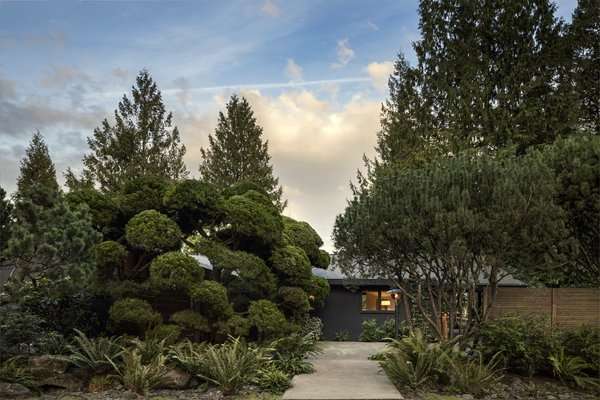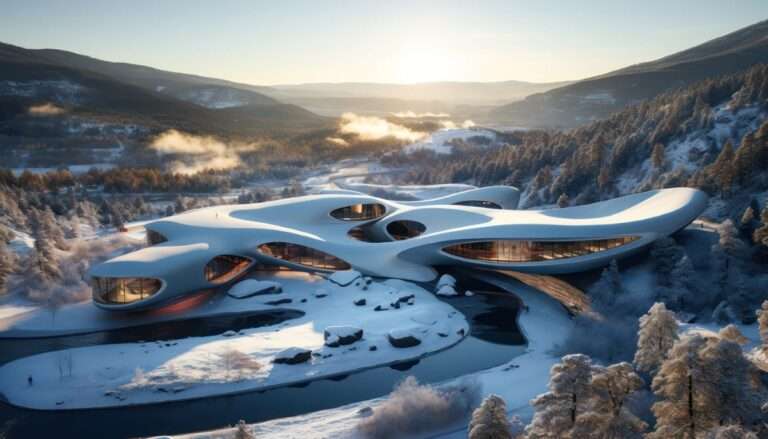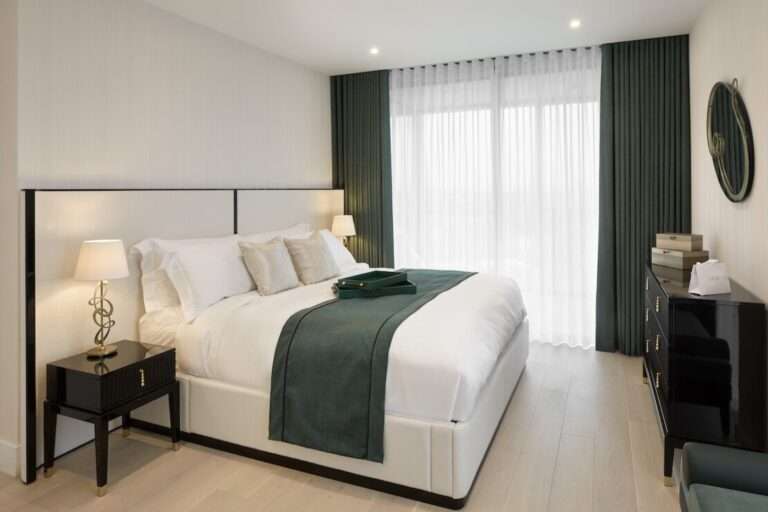On a formerly blighted site, 16 shipping containers have been transformed into elegant homes that are equally eco- and community-minded.
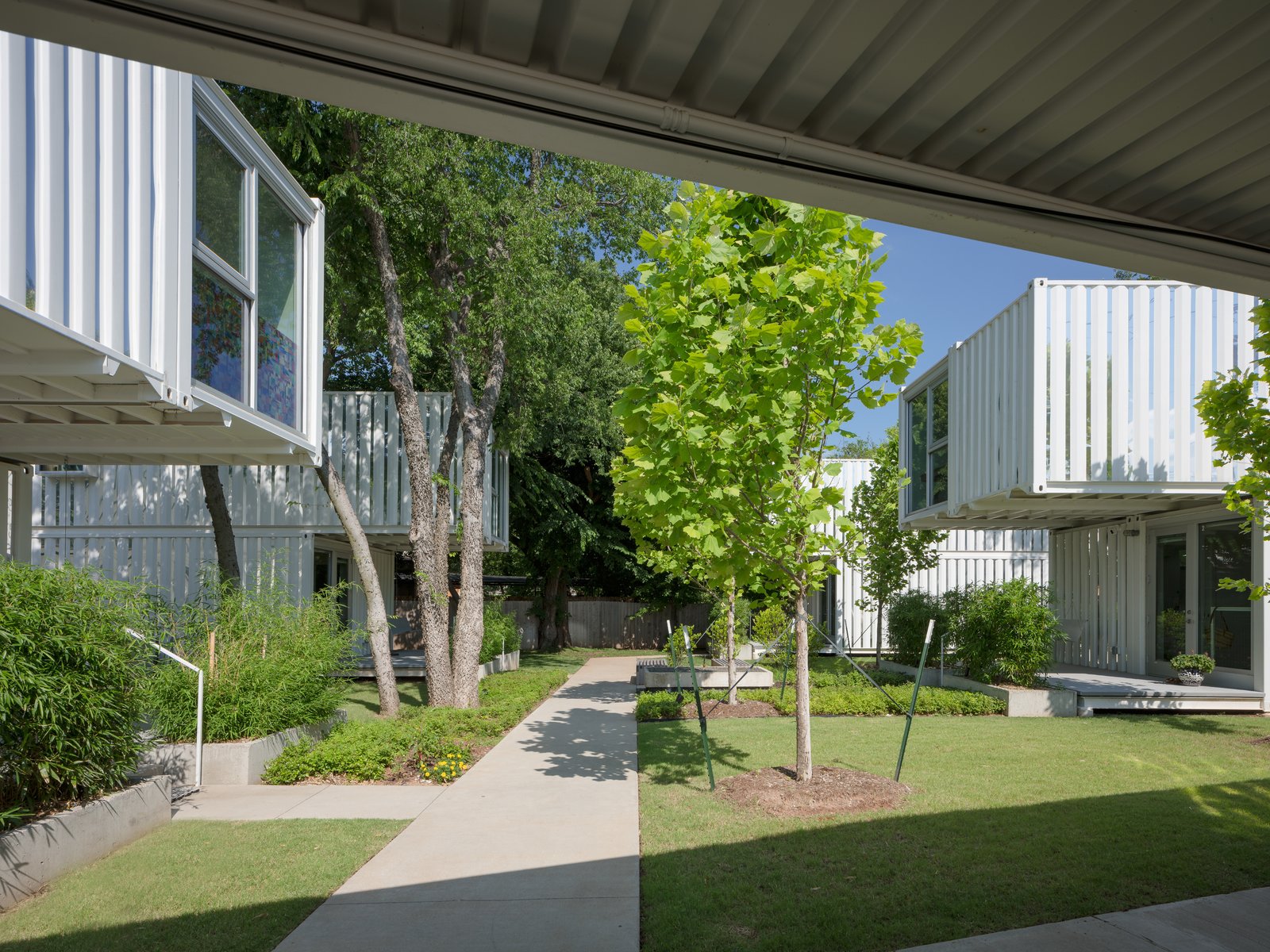
On a previously vacant site in Oklahoma City that was “a magnet for crime,” Allford Hall Monaghan Morris (AHMM) has upcycled 16 used shipping containers to create four single-family homes assembled around a park-like landscape. Squirrel Park was completed in 2018 and cost $1.1 million.
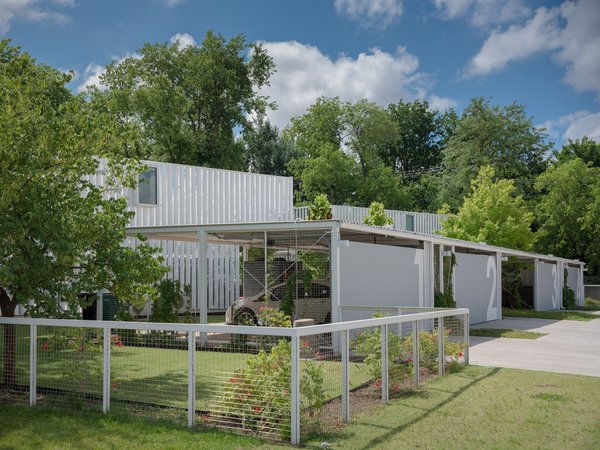
The car ports at Squirrel Park were designed to segue from the street to the lot entrance, which then leads to a central green space. The ports can also accommodate solar panels in the future.
Timothy Soar
From the get-go, sustainability and neighborhood engagement were the main goals of Squirrel Park. The client owns a local restaurant that largely employs formerly incarcerated members of the community, and the concept of giving back, according the architects, “became a guiding principle in the design.”
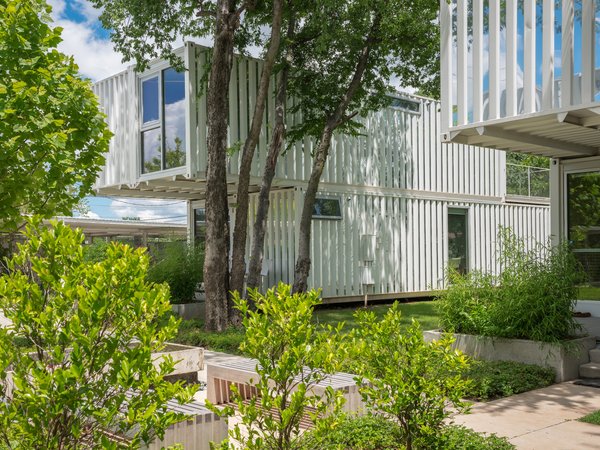
AHMM kept 10 existing trees and introduced other local plants that would be able to absorb rainwater runoff from the buildings, paths, and paving.
Timothy Soar
Located between a residential and commercial neighborhood, the empty property had invited crime; in reviving it, the client was interested in creating a small-scale development that balanced “a strong community focus” with privacy. As the project developer and the inhabitant of one of the 1,400-square-foot homes, he had a particularly keen investment in the property—the other three residences will be rented at “competitive market rates.”
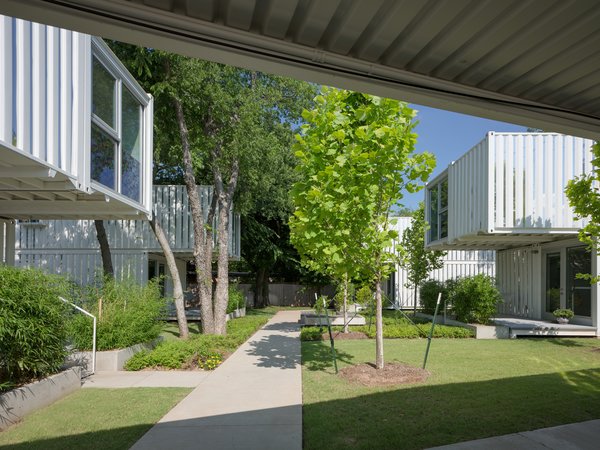
A central “street” runs through the development and affords the feeling of a micro-neighborhood with the recessed front entrances of each home connecting to the communal path.
Timothy Soar
See the full story on Dwell.com: A Sustainable Shipping Container Community Springs Up in Oklahoma City
Related stories:
- Here’s Everything You Need to Know About IKEA’s Big Bet on Smart Home Technology
- What Does Opting Into Home Automation Mean for Privacy?
- How Human-Centric Lighting Is Changing the Way We Illuminate Our Homes

